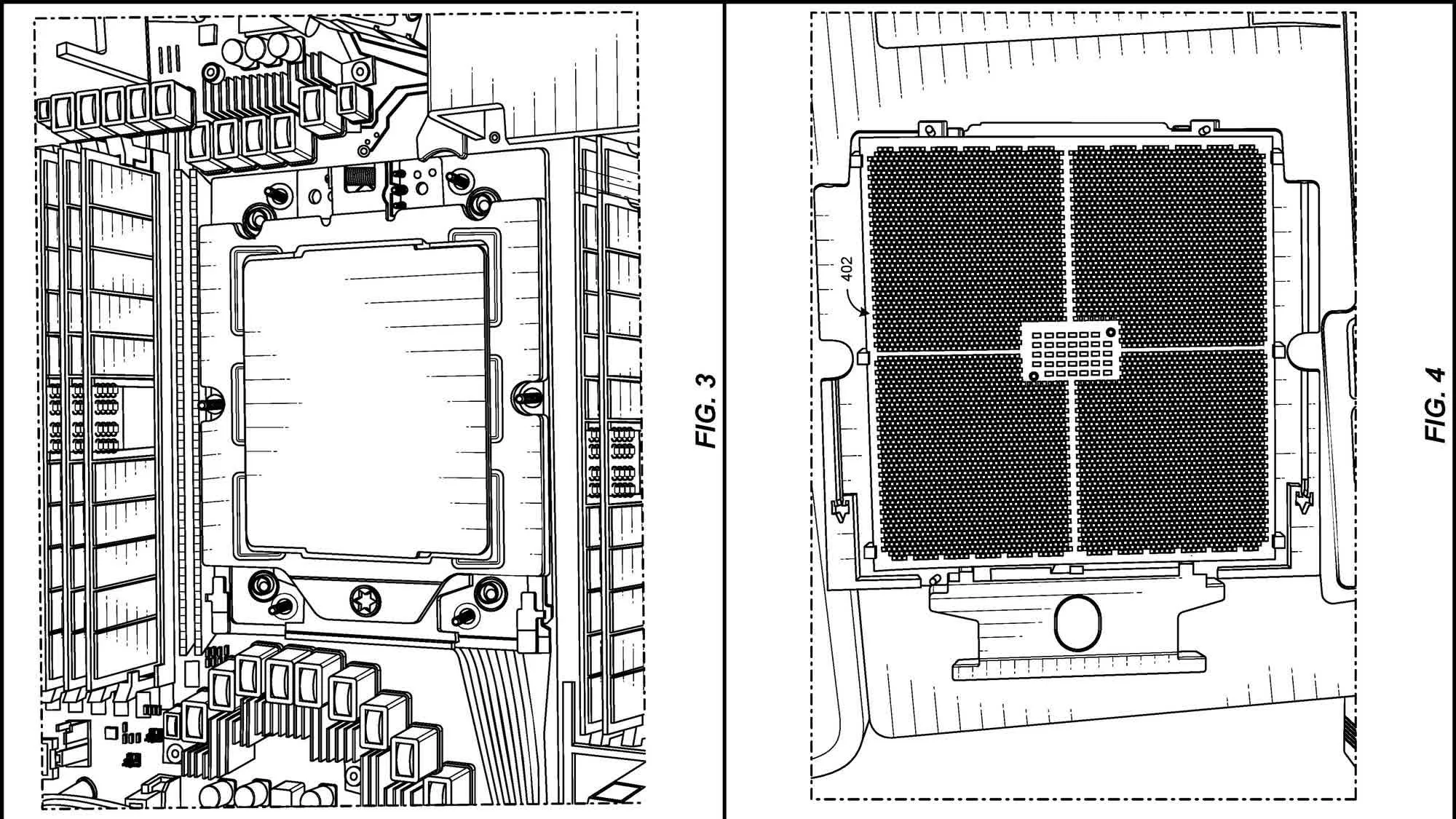Rumor mill: AMD's next-gen AM6 CPU socket will reportedly have 2,100 pins, a 22-percent increase over the 1,718 pins in AM5. However, despite the increased pin count, the two sockets are said to be similar in size and layout, suggesting AM6 will retain the LGA design of its predecessor.
A recently published AMD patent suggests the upcoming AM6 socket will retain enough physical similarity to AM5 to support existing aftermarket attachments like third-party heatsinks, fans, and water blocks – helping reduce upgrade costs for users. This support could also extend to AM4 coolers, which already work with AM5 sockets. However, despite this backward compatibility, cooler manufacturers may still need to design new models for Zen 7 CPUs depending on their chiplet layout.
Bits and Chips points out that packing significantly more pins into the same socket area means AM6 contacts will be much denser than AM5's. This higher pin density suggests AM6 CPUs may support a higher 200W TDP compared to AM5's 170W limit. The extra pins also allow for more data lanes, enabling higher bandwidth input/output essential for next-gen features. The patent filing adds that AM6 will be AMD's first consumer CPU platform to support DDR6 memory and Zen 7 core architecture – advances that could deliver substantial performance improvements.
AMD has yet to reveal any details about AM6, indicating the socket is still under development and unlikely to be announced soon. The first wave of AM5-based CPUs only launched in late 2022, and given AMD's promise to support the same socket for multiple generations, AM6 could still be a few years away. Online rumors suggest the new platform might debut in 2028, featuring PCIe 6.0 support while maintaining backward compatibility with PCIe Gen5 devices.
People using AM5 CPUs – such as the Ryzen 7000, 8000, and 9000 series – need not worry about planned obsolescence just yet. AMD has committed to launching new products based on the existing platform well into 2026 and beyond, ensuring continued support and upgrades for current users. This approach reflects AMD's strategy to maximize platform longevity and provide a smoother transition when AM6 eventually arrives, giving consumers confidence in their investment.

